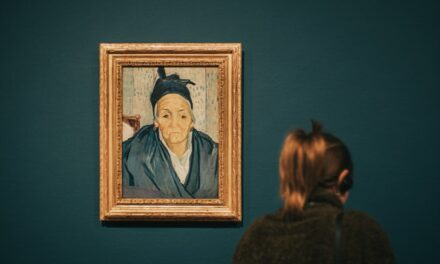Jan Gossaert, also known as Jan Mabuse, stands as a pivotal figure in the Northern Renaissance, a period marked by a flourishing of artistic expression and innovation in Northern Europe. Born around 1478 in the city of Maubeuge, which is now part of modern-day France, Gossaert’s work is characterised by a unique blend of Flemish tradition and the emerging influences of Italian Renaissance art. His oeuvre reflects a deep understanding of human emotion and a meticulous attention to detail, which has earned him a prominent place in the annals of art history.
Gossaert’s contributions extend beyond mere aesthetics; they encapsulate the cultural and intellectual currents of his time, making him a vital subject of study for those interested in the evolution of European art. As an artist who navigated the complexities of his era, Gossaert’s work serves as a bridge between the Gothic traditions of the late Middle Ages and the more humanistic approaches that characterised the Renaissance. His ability to synthesise these diverse influences not only showcases his technical prowess but also highlights his role as a cultural ambassador, bringing together ideas from different regions and epochs.
This article aims to explore Gossaert’s life, his artistic style, notable works, and the lasting impact he has had on subsequent generations of artists.
Summary
- Jan Gossaert, also known as Mabuse, was a prominent Northern Renaissance artist known for his innovative style and international influence.
- Gossaert received his early training in the Netherlands and later travelled to Italy, where he was influenced by the works of Italian Renaissance masters.
- Gossaert’s style combined elements of Northern and Italian Renaissance art, and his work had a significant impact on later artists in the region.
- Notable works by Gossaert include “The Adoration of the Kings” and “Hercules and Deianira,” and he received several important commissions from European royalty and nobility.
- Gossaert’s travels to Italy and his exposure to international artistic trends contributed to his lasting influence on the Northern Renaissance and the wider art world.
Early Life and Education
Jan Gossaert’s early life remains somewhat shrouded in mystery, with limited documentation available regarding his formative years. It is believed that he was born into a family of modest means, which may have influenced his later artistic pursuits. His initial training likely took place in the vibrant artistic milieu of Flanders, where he would have been exposed to the works of prominent contemporaries such as Jan van Eyck and Rogier van der Weyden.
This exposure to high-quality craftsmanship and innovative techniques would have laid the groundwork for Gossaert’s own artistic development. By the time he reached adulthood, Gossaert had established himself as a skilled painter, and he soon began to receive commissions from various patrons. His early works reflect a keen interest in religious themes, which were prevalent during this period.
However, it was not long before he began to explore secular subjects, demonstrating an adaptability that would become a hallmark of his career. The influence of Italian art became increasingly evident in his work, particularly after his travels to Italy, where he encountered the classical ideals that would profoundly shape his artistic vision.
Gossaert’s Style and Influence
Gossaert’s style is often characterised by its intricate detail and rich colour palette, elements that are emblematic of the Northern Renaissance. His paintings exhibit a remarkable precision in rendering textures and surfaces, from the delicate fabrics of clothing to the lifelike representations of human skin. This meticulous attention to detail is complemented by a sophisticated use of light and shadow, which adds depth and dimension to his compositions.
Gossaert’s ability to create a sense of realism was revolutionary for his time, setting him apart from many of his contemporaries. Moreover, Gossaert’s work reflects a synthesis of Northern European traditions with the classical influences he encountered during his travels. He was particularly adept at incorporating elements of Italian Renaissance art into his own practice, such as the use of perspective and anatomical accuracy.
This blending of styles not only enriched his own work but also contributed to the broader evolution of art in Northern Europe. His influence can be seen in the works of later artists who sought to emulate his techniques and thematic choices, further solidifying his position as a key figure in the history of art.
Notable Works and Commissions
Throughout his career, Jan Gossaert produced a number of notable works that have garnered significant attention from art historians and enthusiasts alike. One of his most celebrated pieces is “The Adoration of the Magi,” which exemplifies his mastery of composition and colour. In this work, Gossaert captures the moment when the three wise men present their gifts to the infant Christ, surrounded by an array of figures that convey a sense of reverence and awe.
The intricate details in the clothing and accessories of each character highlight Gossaert’s skill in depicting texture and fabric, while the rich colour palette imbues the scene with warmth and vibrancy. Another significant work is “Portrait of a Man,” which showcases Gossaert’s ability to convey personality through facial expression and posture. The sitter’s gaze is direct and engaging, drawing viewers into the painting while simultaneously inviting them to ponder the subject’s identity and story.
This portrait exemplifies Gossaert’s talent for capturing the essence of individual characters, a skill that would influence portraiture in Northern Europe for generations to come. His commissions often included altarpieces and portraits for wealthy patrons, reflecting both his technical skill and his ability to cater to the tastes of his clientele.
Gossaert’s Travels and International Influence
Jan Gossaert’s travels played a crucial role in shaping his artistic vision and expanding his influence beyond the borders of Flanders.
During this period, he studied the works of renowned artists such as Raphael and Michelangelo, absorbing their techniques and philosophies.
This exposure not only enriched his own practice but also allowed him to introduce Italianate elements into Northern European art. Upon returning to Flanders, Gossaert became an important conduit for these new ideas, helping to bridge the gap between Italian Renaissance art and Northern traditions. His ability to synthesise these diverse influences is evident in his later works, which exhibit a harmonious blend of realism and idealism.
As he continued to receive commissions from various patrons across Europe, Gossaert’s reputation grew, establishing him as an artist of international significance. His travels not only expanded his artistic horizons but also facilitated cultural exchange, allowing him to share innovative techniques with fellow artists throughout Northern Europe.
Gossaert’s Impact on the Northern Renaissance
Jan Gossaert’s contributions to the Northern Renaissance cannot be overstated; he played a pivotal role in shaping the artistic landscape of his time. His innovative approach to composition, colour, and form set new standards for painters in Flanders and beyond. By integrating elements from Italian art into his own practice, Gossaert helped to elevate Northern European painting from its Gothic roots towards a more sophisticated and humanistic expression.
His influence extended beyond mere technique; Gossaert’s exploration of themes such as individualism and emotion resonated with contemporary audiences and laid the groundwork for future developments in art. Artists who followed in his footsteps were inspired by his ability to convey complex narratives through visual means, leading to a greater emphasis on storytelling within painting. As such, Gossaert’s impact on the Northern Renaissance can be seen as both stylistic and thematic, marking him as a key figure in this transformative period.
Gossaert’s Techniques and Materials
Jan Gossaert was known for his meticulous approach to painting, employing techniques that showcased both his skill and innovation. He primarily worked with oil paints, a medium that allowed for greater flexibility and depth than traditional tempera paints. This choice enabled him to achieve rich colour saturation and subtle gradations of tone, enhancing the overall realism of his works.
Gossaert’s mastery of oil painting techniques included layering glazes to create luminosity and depth, as well as employing fine brushes for intricate details. In addition to oil paints, Gossaert was also adept at using other materials such as wood panels for his paintings. The smooth surface of these panels allowed for precise brushwork and fine detail, which were hallmarks of his style.
His careful preparation of surfaces ensured that each piece was not only visually striking but also durable over time. By combining these techniques with an acute understanding of light and shadow, Gossaert was able to create compositions that were both dynamic and lifelike.
Gossaert’s Legacy and Influence on Later Artists
The legacy of Jan Gossaert extends far beyond his own lifetime; he has left an indelible mark on subsequent generations of artists who sought to emulate his style and techniques. His innovative approach to portraiture influenced many painters in Northern Europe, encouraging them to explore individuality and character within their subjects. Artists such as Hans Holbein the Younger and Pieter Paul Rubens drew inspiration from Gossaert’s ability to capture human emotion and personality through paint.
Moreover, Gossaert’s integration of Italian Renaissance elements into Northern European art paved the way for future artists to experiment with new ideas and styles. His work served as a catalyst for change within the artistic community, encouraging others to break away from traditional norms and embrace innovation. As art continued to evolve throughout the Baroque period and beyond, Gossaert’s influence remained evident in the emphasis on realism, emotional depth, and narrative complexity that characterised later works.
Gossaert’s Role in the Art Market of his Time
During Jan Gossaert’s career, the art market was undergoing significant changes as demand for paintings grew among wealthy patrons across Europe. As an accomplished artist with a reputation for quality craftsmanship, Gossaert found himself well-positioned within this burgeoning market. He received numerous commissions from nobility and affluent merchants who sought both religious altarpieces and secular portraits that reflected their status.
Gossaert’s ability to cater to diverse tastes allowed him to thrive in this competitive environment. He adeptly navigated relationships with patrons while maintaining artistic integrity, ensuring that each commission met their expectations while also showcasing his unique style. This balance between commercial success and artistic expression exemplifies Gossaert’s role as both an artist and a savvy participant in the evolving art market of his time.
Gossaert’s Personal Life and Relationships
While much is known about Jan Gossaert’s professional achievements, details regarding his personal life remain relatively scarce. It is believed that he married around 1500; however, little information exists about his wife or family life. Despite this lack of documentation, it is clear that relationships played an important role in shaping both his career and artistic development.
Gossaert maintained connections with various artists and patrons throughout his life, fostering collaborations that enriched his work. His interactions with fellow painters provided opportunities for exchange of ideas and techniques while also contributing to a sense of community within the artistic milieu of Flanders. These relationships not only influenced Gossaert’s practice but also helped establish him as a respected figure within the broader context of Northern Renaissance art.
Jan Gossaert’s Enduring Legacy
In conclusion, Jan Gossaert’s contributions to art during the Northern Renaissance are both profound and enduring. His innovative techniques, masterful compositions, and ability to synthesise diverse influences have left an indelible mark on the history of European art. Through his exploration of themes such as individuality and emotion, he paved the way for future generations of artists who sought to capture the complexities of human experience.
Gossaert’s legacy continues to resonate today; he remains an essential figure for those studying art history or seeking inspiration from past masters. As we reflect on his life and work, it becomes clear that Jan Gossaert was not merely an artist but also a cultural ambassador who helped shape the trajectory of art during one of its most transformative periods. His enduring influence serves as a testament to the power of creativity and innovation in shaping our understanding of beauty and expression across time.
If you are interested in learning more about the use of colour in art, you may want to check out the article Seasonal Color Palettes in Art: Adapting to Nature’s Changes.
It provides valuable insights into how to use colour effectively to evoke different moods and emotions in art.



